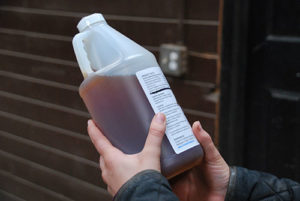New Test to Detect Toxic Blue-Green Algae in Water
Research conducted by Iowa State University College of Veterinary Medicine faculty members Steve Ensley, DVM, MS, PhD, and Kyoung-Jin Yoon, DVM, MS, PhD, Dipl. ACVM, has resulted in a faster and more accurate method for rapid and specific detection of toxic algae that grows in livestock water sources.
Several species of blue-green algae found in Iowa and the Midwest can produce toxins that cause adverse health concerns in animals—including horses—as well as humans. These algae are bacteria and can produce poisonous neurotoxins and hepatoxins.
Most horses exposed to blue-green algae toxins die acutely. Treatment is supportive and symptomatic. In some cases horses can recover, but death typically occurs so quickly that the animals are found dead near the water source.
The PCR-based method developed at Iowa State by Ensley and Yoon detects the toxigenic Microcystis spp. and allows for a rapid determination of the presence of toxigenic Microcystis in any water source. Detection of the toxins will allow for prevention and management of adverse health effects in animals that consume water contaminated with blue-green algae
Create a free account with TheHorse.com to view this content.
TheHorse.com is home to thousands of free articles about horse health care. In order to access some of our exclusive free content, you must be signed into TheHorse.com.
Start your free account today!
Already have an account?
and continue reading.
Related Articles
Stay on top of the most recent Horse Health news with

















